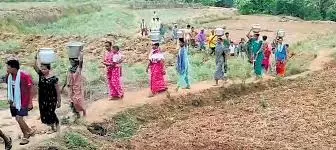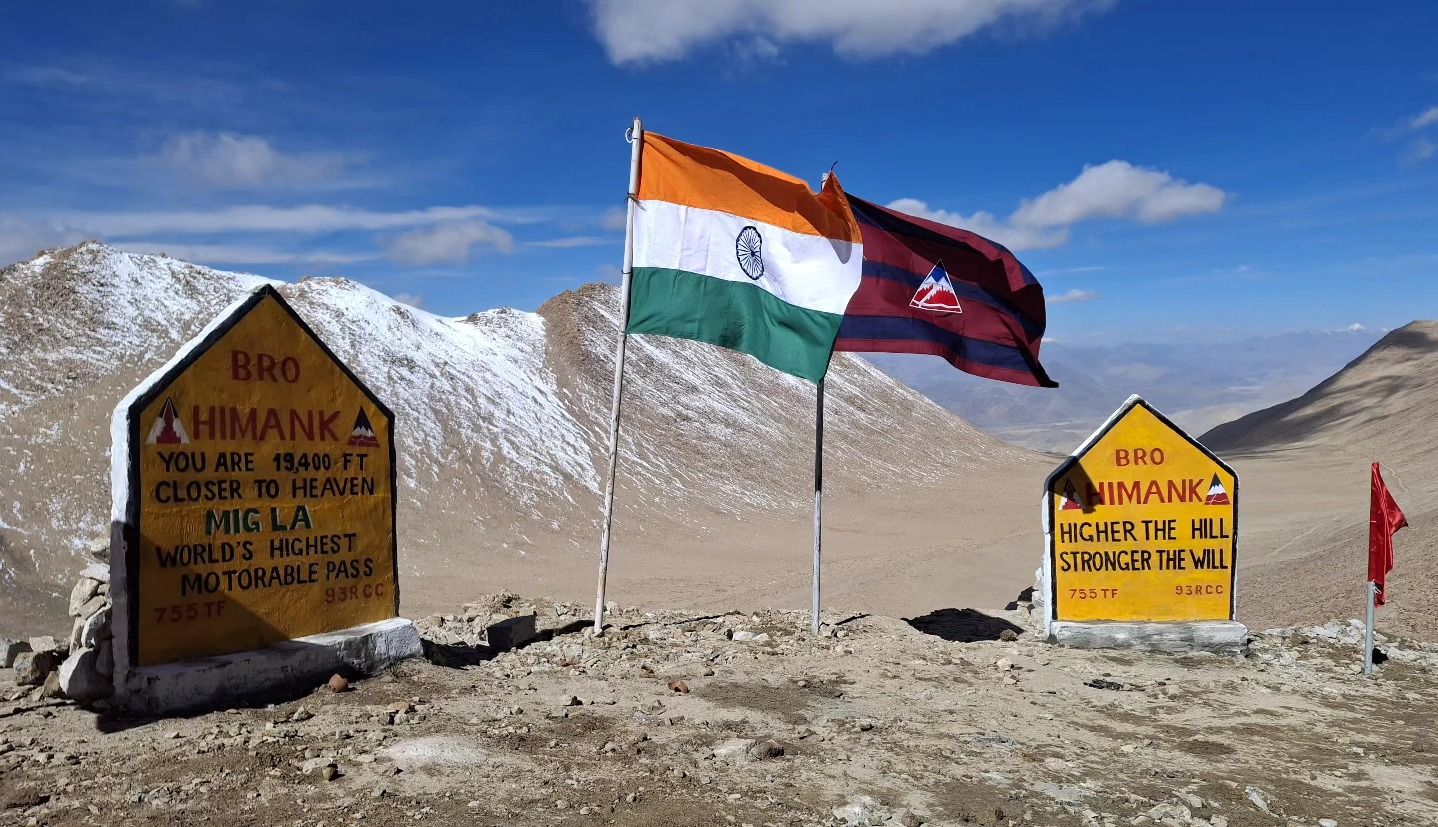The illegal migration of tribal Kuki-Chin people into India from Myanmar is one of the key issues in the ongoing ethnic conflict between the Meiteis and Kukis in Manipur.
While the majority Meiteis have accused these illegal migrants and the alleged “narco-terror network” along the Indo-Myanmar Border (IMB) of fomenting trouble in the state, the Kukis have blamed the Meiteis and Chief Minister N Biren Singh, a Meitei himself, of using making this a pretext for “ethnic cleansing”.
Amid this charged and sensitive debate in the state, questions have been raised on the Free Movement Regime (FMR) that facilitates migration across the IMB.
What is the Free Movement Regime on the IMB?
The border between India and Myanmar runs for 1,643 km in the four states of Mizoram, Manipur, Nagaland, and Arunachal Pradesh. The FMR is a mutually agreed arrangement between the two countries that allows tribes living along the border on either side to travel up to 16 km inside the other country without a visa.
The FMR was implemented in 2018 as part of the Narendra Modi government’s Act East policy at a time when diplomatic relations between India and Myanmar were on the upswing. In fact, the FMR was to be put in place in 2017 itself, but was deferred due to the Rohingya refugee crisis that erupted that August.
But why was such a regime conceptualised?
India’s borders with both Bangladesh and Myanmar are complex. The border between India and Myanmar was demarcated by the British in 1826, without seeking the opinion of the people living in the region. The border effectively split people of the same ethnicity and culture into two nations without their consent. Even the current IMB is a reflection of the line drawn by the British.
People in the region have strong ethnic and familial ties across the border. In the Moreh region of Manipur, there are villages where some homes are in Myanmar. In Nagaland’s Mon district, the border passes through the house of the chief of Longwa village, splitting his very home into two.
Apart from facilitating people-to-people contact, the FMR was supposed to give an impetus to local trade and business. The region has a long history of trans-border trade through customs and border haats. Given the low-income economy of the region, such exchanges are vital for the sustenance of local livelihoods. For the border people in Myanmar, towns in India are closer for business, education, and healthcare than those in their own country.
So why is the FMR being discussed critically now?
Although beneficial to local people and helpful in improving Indo-Myanmar ties, the FMR has been criticised for unintentionally aiding illegal immigration, drug trafficking, and gun running.
The Indo-Myanmar border is almost entirely unfenced; in Manipur less than 6 km of the border has been fenced. The border runs through forested and undulating terrain, and is difficult to monitor.
Since the military coup in Myanmar on February 1, 2021, the ruling junta has launched a campaign of persecution against the Kuki-Chin peoples. This has pushed large numbers of Myanmarese tribals across the country’s western border into India, especially into Manipur and Mizoram, where they have sought shelter. Mizoram, where a large section of the population has close ethnic and cultural ties with people across the border, has set up camps for more than 40,000 refugees, despite protests from the Union Ministry of Home Affairs.
Manipur too has received a chunk of illegal migrants over the past year and a half. A committee set up by the state government to identify such migrants recently put their number at 2,187. Earlier this week, Manipur Chief Secretary Vineet Joshi wrote to the Assam Rifles, expressing concern over reports of 718 new infiltrations from Myanmar, and asked the paramilitary force to identify and deport them.
The Manipur government has alleged that village chiefs have been illegally settling migrants from Myanmar in new villages in the hills, leading to deforestation. An eviction drive against these new villages became the flashpoint between Kukis in the hills and the government this March, leading to violence in the state. (The Kuki and Naga peoples live in the hills that surround the Imphal valley, whereas the valley itself is home to the majority Meiteis.)
On May 2, a day before the violence erupted in Manipur, Chief Minister Biren Singh said at a press conference in Imphal: “Illegal immigration from Myanmar to Manipur is such that we have so far detained 410 people from that country who have been staying in the state without proper documents. There is an additional 2,400 of them seeking shelter in detention homes along the border areas of the state who have fled Myanmar due to the political situation in that country.”
He added: “We have reasons to believe that there must be many more Myanmarese residing illegally in Manipur… In the larger interests of the nation and the state and for security purposes, I appeal to the people residing in the border areas where infiltration can take place to cooperate so that details of such immigrants can be recorded.”
Is there a problem of drug trafficking or terrorism related to the FMR?
According to a paper published by Anuradha Oinam of the Centre for Land Warfare Studies (CLAWS), a number of insurgent groups such as the United National Liberation Front (UNLF), People’s Liberation Army (PLA), the United Liberation Front of Assam (ULFA), National Socialist Council of Nagaland (NSCN), and small groups of Kukis and Zomis have built camps in Sagaing Division, Kachin State and Chin State (in Myanmar).
“They took shelter there, obtained arms, trained cadres, and, most importantly, engaged in illegal activities such as smuggling drugs and selling weapons to raise funds. This is possible because of the porous borders and frequent misuse of FMR. Therefore, managing and administering the border areas effectively is pertinent for reducing drug trafficking and illegal cross-border movement on unfenced borders,” the paper said. (Revisiting Free Movement Regime (FMR): Challenges and Implications, November 2022)
So should the FMR be removed?
The regime has been reviewed from time to time, and most experts agree that the FMR needs better regulation. As the crisis in Myanmar escalated and the influx of refugees increased, India suspended the FMR in September 2022.
However, the removal of the FMR entirely may not be undesirable. Oinam’s paper pointed to the difficulties the local population may face if that happens.
“Villagers seemed to be enjoying dual citizenships and were entitled to move freely across the border before the outbreak of Covid-19 by virtue of the FMR,” he wrote. Also, “locals in Phek district, Nagaland, stated that the Myanmar villagers preferred to visit the Indian side for education, trade and medical facilities. For them, the nearest Myanmar town is far away”.
“Hence”, Oinam wrote, “revoking FMR entirely may not be favoured by the locals”.
The paper noted that while the Meiteis of Manipur wanted the border to be sealed, locals in Moreh pointed out that some of their ancestral lands were on the Myanmar side, and “complete fencing” was not the best option.
The paper advocated a middle path: “Due to the changing socio-politico-economic condition in Myanmar and the dynamic demographic profile, illicit activities along with border crimes along the IMB, it is imperative for New Delhi to tackle the issue by pursuing ‘killing the snake without breaking the stick’ approach.”














































